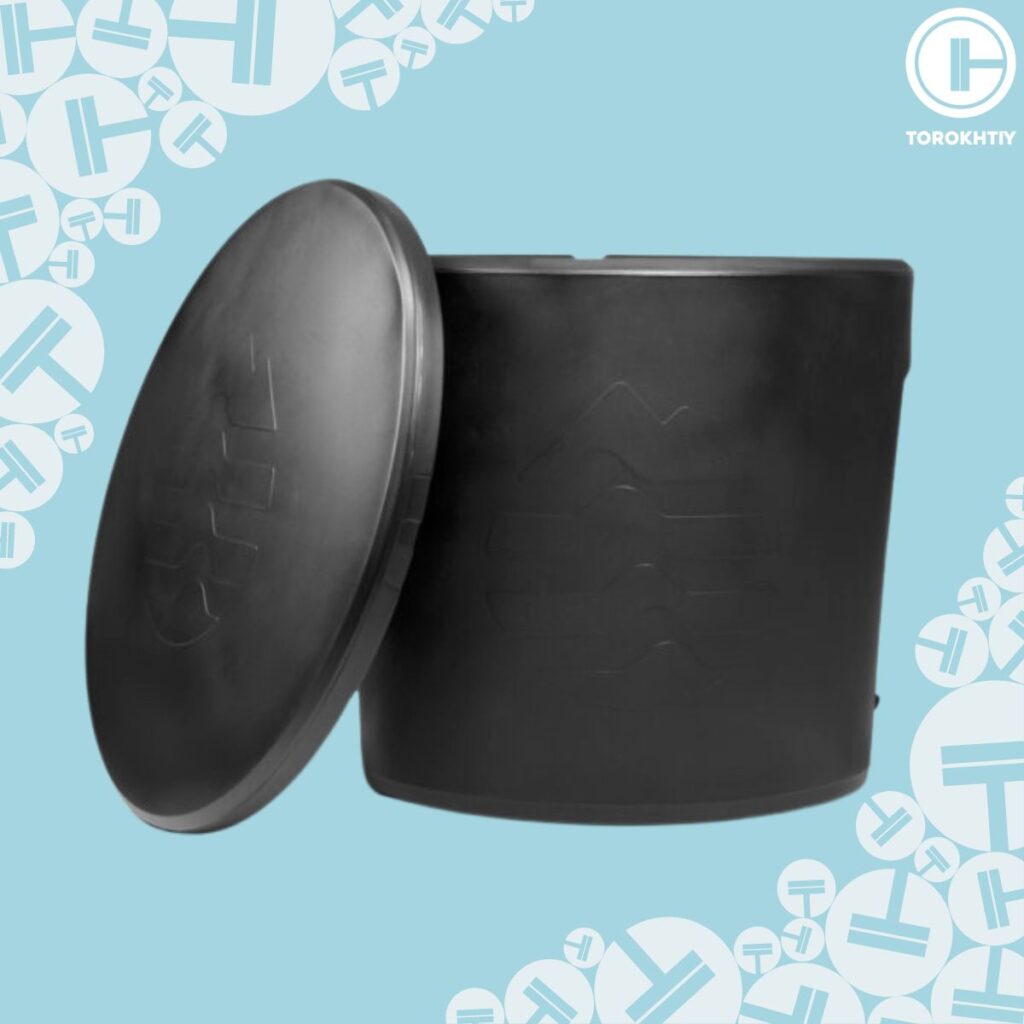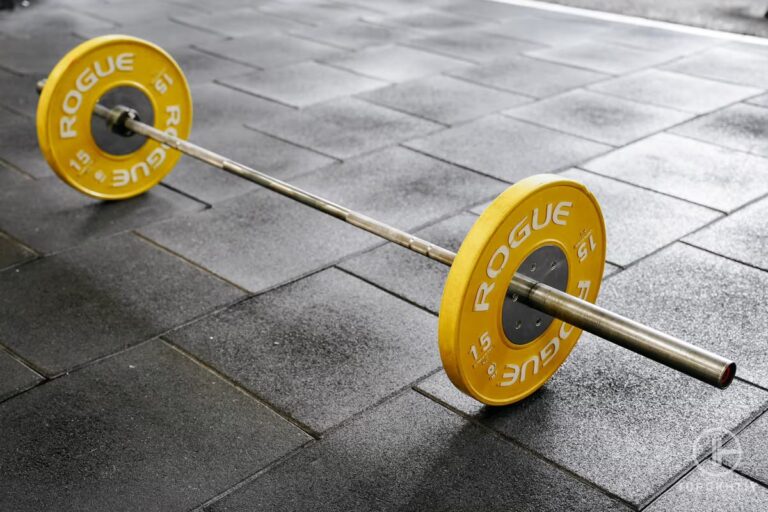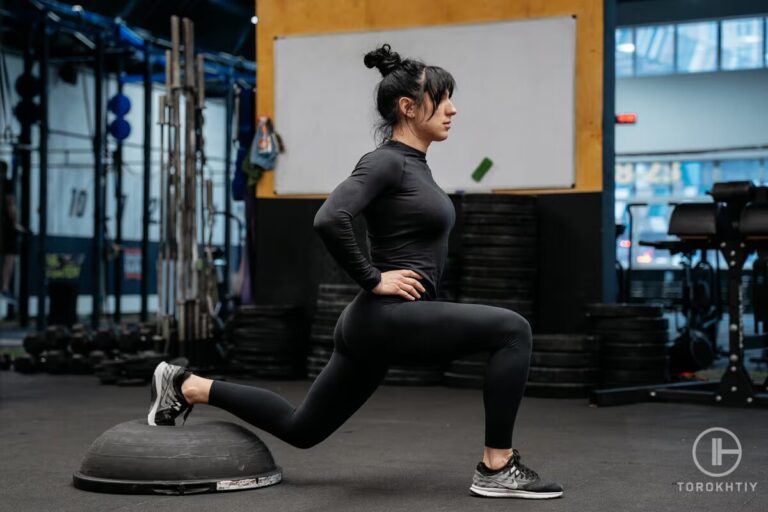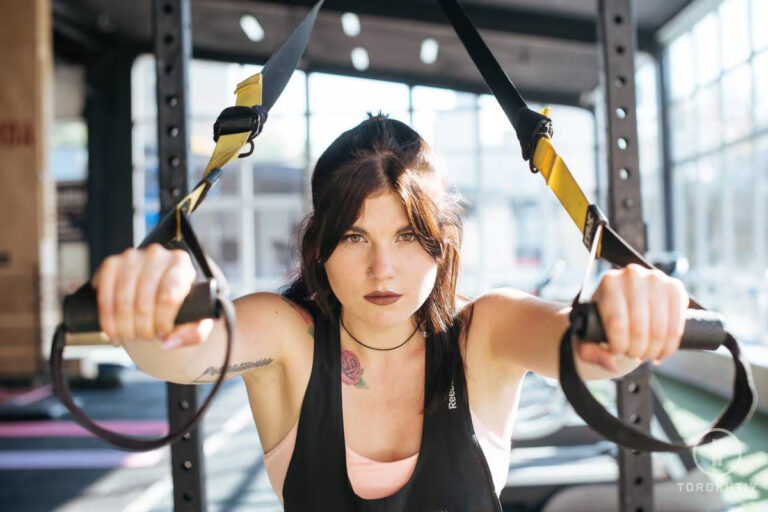Sauna vs Ice Bath – Finding the Best Path to Recovery and Wellness
Hot or cold, sauna vs ice bath… Which should you choose and, in fact, should you even make a choice, or can you get the best of both worlds?
You won’t find a lot of people that don’t like saunas. The warmth is so relaxing and calming, and once you get out of it, you feel like a new person. Ice baths are a different matter, though – they’re intimidating to beginners and they’re anything but comfortable and relaxing. Still, ice baths have a lot of benefits, and so do saunas.
If you want to give both a try, you’ll struggle a bit with finding a balance. How long should you stay in a sauna before it’s too much? Can you just hop out of the sauna and into an ice bath on the same day?
This is a hot topic, but don’t worry; we’ll cool it down with some detailed answers. By the end of the article, you’ll know exactly what to expect from each and if you want to combine them, you’ll know how.
Let’s warm up, cool down, and everything in between!
What is the difference between sauna vs ice bath? The difference between these two is in the effects they have on the body. The sauna exposes you to heat, and makes you relax and sweat. An ice bath immerses you in cold water, reduces inflammation and helps muscles recover.
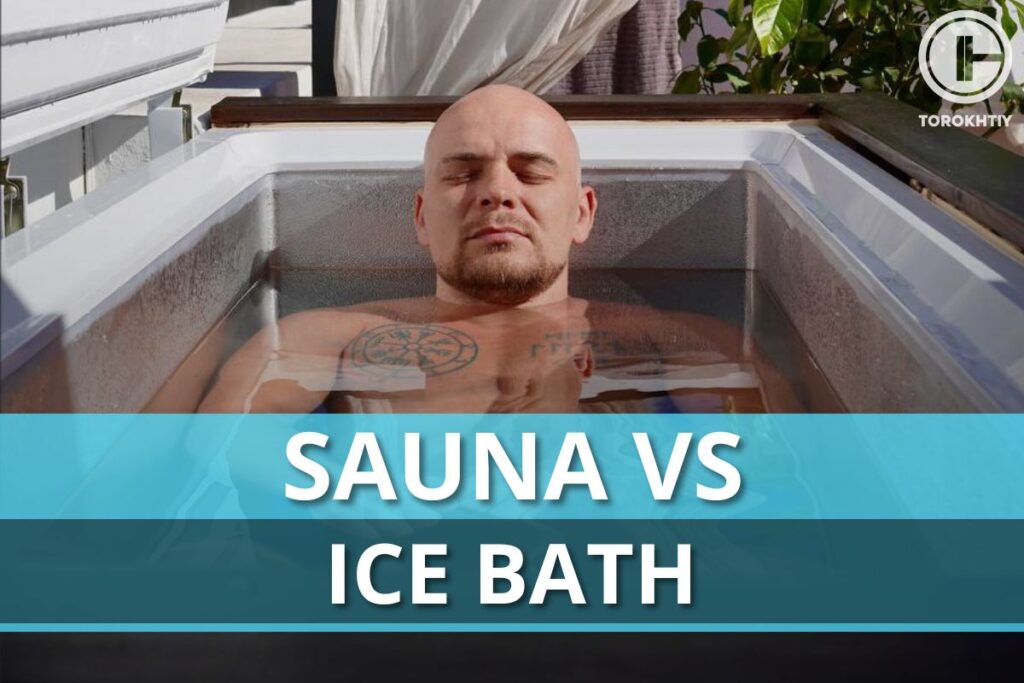
What is Sauna?
If you like heat and you want to get really, really hot and sweaty, you’ll love saunas.
A sauna is an enclosed space that is designed to be exposed to heat. The temperatures in it usually range from 150 to 195°F (sometimes more) and it creates an environment that induces sweat and relaxation. Of course, if you don’t like heat, sweating in a sauna will be anything but relaxing, but don’t knock it till you’ve tried it because saunas have some amazing health benefits. The heat triggers a series of physiological responses, like increased blood circulation and the dilation of blood vessels. As a result, your body releases endorphins, which help with stress and improve your mood.
There are dry saunas, which have low humidity, and steam saunas. You don’t have to worry about being stuck in the heat forever because sauna protocols involve intervals for entering the sauna for a specific duration (usually 15 minutes), and then you exit, cool down, and repeat the process.
What is Ice Bathing?
Believe it or not, immersing yourself in a tub of icy cold water is a therapeutic technique and it’s very popular, especially among athletes and fitness junkies. To make the water even colder, there are often ice packs or just plain ice in it. Sounds comfortable, or relaxing? Of course it doesn’t, but unlike with saunas, being relaxed isn’t the point of ice bathing.
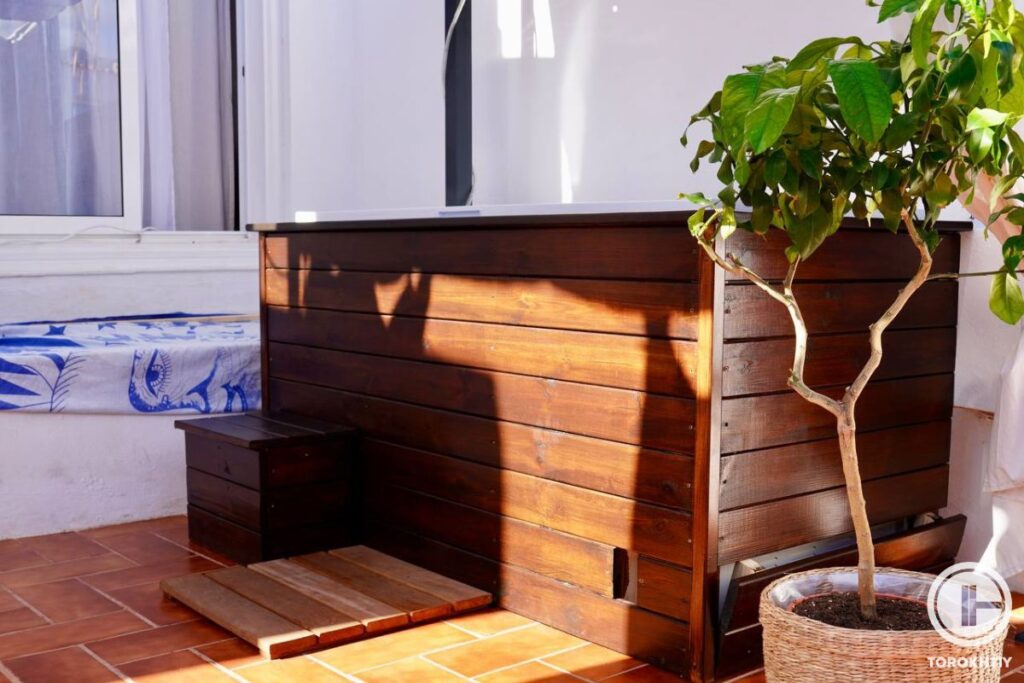
In an ice bath, the water temperature typically goes from 33.8°F to 59°F (1-15°C) and its main objective is to harness the physiological responses that the cold triggers. Some people use ice baths to help their muscles recover after a workout. When you get in cold water, your blood vessels constrict and reduce the blood flow to the extremities. When you get out of the ice bath and start warming up, blood flow increases and that can help with inflammation, sore muscles and removing metabolic byproducts. But the benefits of ice baths are also related to immune boost, stress management, resilience, catecholamine release and more…
When to Take Sauna and Ice Bath Together?
Although they’re extremes in a way, there are ways of combining them to get the best out of both. Start with a 15-minute sauna session to relax and get cardiovascular benefits it offers. Follow this with a 1-2 minute ice bath to cool down. After this cycle, take a break to drink some water, relax, and then repeat the sequence up to 3 times. This approach is especially beneficial after an intense workout or during periods of heightened stress.
What to Do After Sauna and Ice Bath?
After an ice sauna/ice bath session, there’s really not that much to do. Relax, rehydrate, talk to your friends – sauna can be an awesome way of spending time with friends and family – no phones, distractions… if you’re planning another round, that’s fine, just remember to drink enough water before.
Sauna vs Ice Bath: Pros and Cons
When you put sauna vs cold plunge side by side, you’ll see both have a decent number of benefits, but they have their drawbacks, too.
The most obvious thing a sauna has going for it is how relaxed it makes you. Whether you’re in a dry or steam sauna, the calm atmosphere will relax you, make you sweat, and trigger the release of endorphins, which means less stress. The heat will also dilate your blood vessels and improve your cardiovascular function over time.
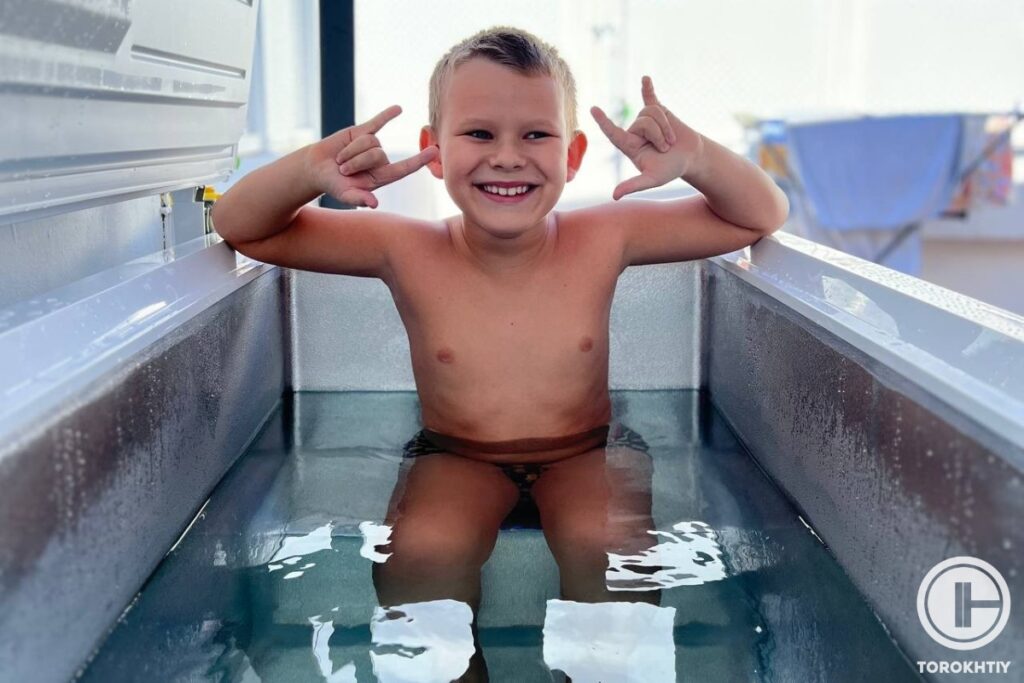
However, a sauna is not without its cons, especially for people who can’t tolerate heat very well. For them, the experience will be uncomfortable, and if there are any underlying health conditions, it can be a recipe for disaster. Another issue is that excessive sweating can lead to dehydration.
An ice bath won’t relax you, but the cold will reduce inflammation, help your muscles recover, and it can help with pain because it numbs the nerve endings. Ice baths are very popular with professional athletes because of how effective they are for recovery when used correctly. Sadly, being in an ice bath isn’t a very pleasant experience, and if you have circulatory or respiratory issues, you should ask your doctor before you try one (maybe you will need to regress it a bit).
| Aspect | Saunas | Ice Baths |
|---|---|---|
| Temperature | 150 to 195°F (or more) | 34° to 59°F |
| Primary Benefit | Relaxation, stress reduction, cardiovascular benefits | Catecholamine release, stress management, Reduced inflammation, muscle recovery |
| Method | Dry or steam heat | Cold water with or without ice |
| Usage | Prominent in wellness spas and fitness centers (in Nordic countries often in the apartment/house) | Done alone is great in the morning for boosting alertness and mood |
| Risk Factors | Dehydration, heat sensitivity, risk for certain health conditions | Adverse effects with prolonged exposure, especially for people with heart, circulatory, or respiratory issues |
Ice Bath and Sauna Together
If you put saunas and ice baths together, you get a well-rounded approach to physical and mental health. This is called contrast therapy, and it involves alternating between high and low temperatures. Above in the article, we already mentioned contrast therapy when you do one immediately after another, but what if you want to do both during a day but at different times? How exactly do you combine them, ice bath or sauna first?
Start with an ice bath, preferably in the morning. This early plunge can improve mood and alertness for the day, reduce some possible inflammation, and help your muscles recover faster. Then in the evening, go for a sauna session to unwind, relax and get the cardiovascular and recovery benefits.
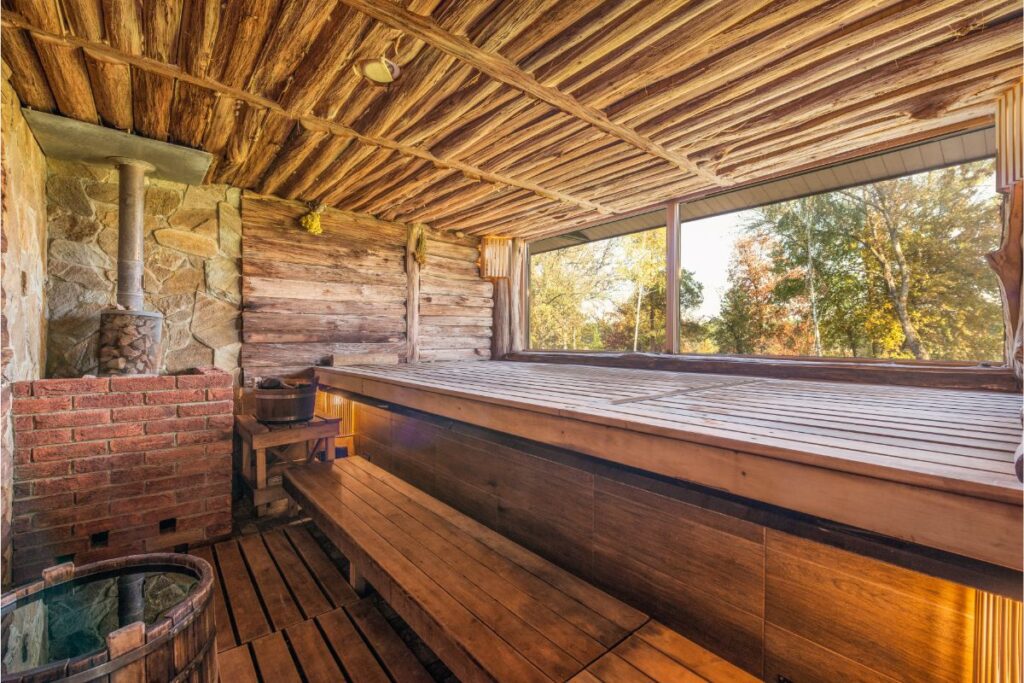
But like we said, If you want to combine an ice bath and a sauna without this much of a time gap, start with 15 minutes in a sauna to relax and sweat, then follow it by a 1-minute ice bath to cool down. Have a couple of minutes break between rounds to hydrate and relax, and if you want, you can do up to three rounds.
Sauna vs Ice Bath: What is Better for Recovery After a Workout
Which will work better, the sauna or an ice bath after a workout? Athletes will usually choose ice baths over saunas because it can speed up recovery after an intense physical activity. The thing about ice baths is, you can’t get in one too soon ( preferably for at least 4 hours after the workout), or you’ll lower the hypertrophic response, which is crucial for muscle growth. This is particularly important if your main focus is developing muscle mass. In that case, if you want something to do immediately after the workout, go for a sauna session. Best way for recovery? Do both – ice bath in the morning, sauna in the evening.
Saunas are better for relaxation and reducing stress. If you’re set on using a sauna after working out, that’s fine, too, because both saunas and ice baths help with recovery through different mechanisms, and they both can stimulate the blood flow. There’s also the option of combining the two, but again, you should start with a sauna and follow it with an ice bath.
3 Things to Consider When Choosing Between Ice Bath and Sauna
Choosing between an ice bath and a sauna can be tricky if you don’t know which factors you need to take into consideration, so let’s see what you need to pay attention to.
1. Personal Goals
Think about what’s important – are you focused on recovery, or is stress reduction what you’re really after? Saunas are famous for being relaxing, but ice baths are excellent at reducing inflammation and helping your muscles recover. There’s also adaptation – do you want your body to get used to the hot or cold temperatures better? Saunas and ice baths can help you adapt a bit to extreme temperatures.

Timing is another important factor, so consider taking a sauna session in the evening to help you relax, and leave the ice baths for mornings to set you up for the day.
2. Training Specifications
The nature of your training plays a big role, but you don’t actually need to choose between a sauna and an ice bath. Ice baths are fantastic because they can help with sore muscles and handle the inflammation. However, saunas have a lot of psychological benefits, like helping your body acclimate to the heat (which is what you experience during training), and they’re extremely relaxing. Relaxation is very important, especially for competitive athletes, because it helps with mental recovery and preparation. So, instead of choosing one over the other, use them both strategically.
3. Health Condition
Before you make a choice, think about the state of your health. Both saunas and ice baths can be problematic if you’re dealing with underlying health issues, especially those of cardiovascular, respiratory, or circulatory nature. Check with your doctor if it’s okay for you to use any hot or cold therapy and proceed from there.
Ice Bath We Recommend for Ice Bathing
Ice Barrel 300
- Dimensions: 35.5”W x 30.5”H
- Weight: 61 lbs
- Material: Recycled plastic
- Shape: Cylinder
- Installation type: Place anywhere
- Capacity: 77 gallons
- Package: Tub, lid, chiller plug, user manual, warranty
- Warranty: Lifetime
- Extra features: Built-in seat, chiller port, drainage port
- Recommended by Athletes: Brian Mazza, Brooke Wells
An effective ice bath starts with a proper ice barrel, like the Ice Barrel 300. Leave your bathtub for hot baths and get yourself a barrel for an icy one.
This ice barrel is fully insulated and easy to use. There’s a seat inside to keep you in an upright seated position, which is very comfortable (especially for beginners).
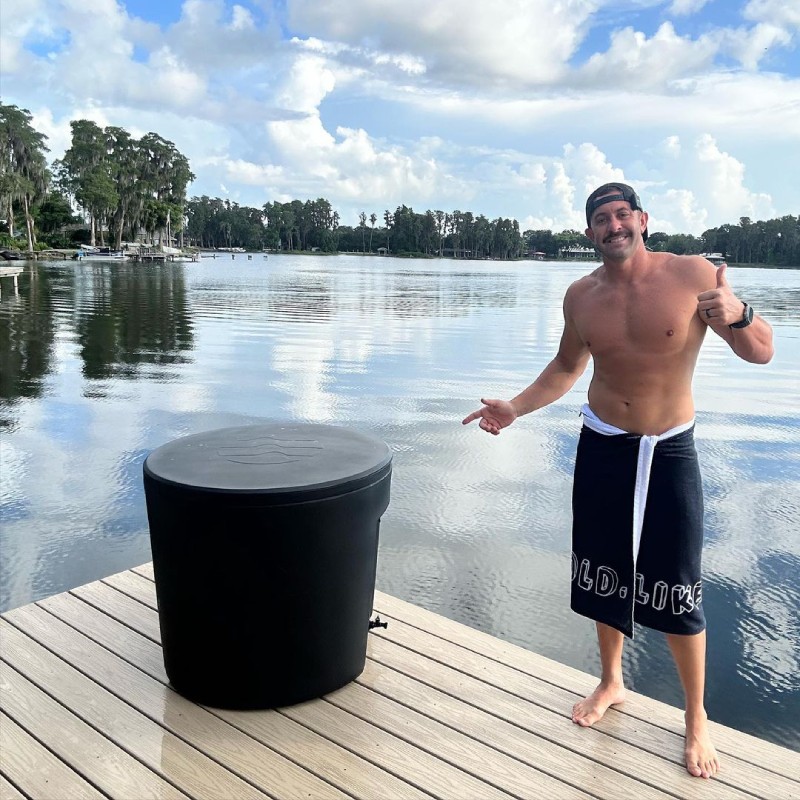
This barrel is made in the USA using recycled materials and it weighs 61 lbs when it’s empty. When you fill it up, its weight goes up to 700 lbs, and it holds 77 gallons of water. It’s not expensive when you compare it to some other tools in this category, and it’s covered by a limited lifetime warranty.
Positives:
Could be better:
FAQ
Which Is Better After a Workout Sauna or Ice Bath?
There’s no winner here, it all depends on your preferences and goals. Saunas are great at relaxation and they offer a lot of cardiovascular benefits, promoting a shift towards the parasympathetic nervous system’s activity, which is crucial for recovery. Ice baths, on the other hand, are really good at reducing inflammation, helping your muscles recover, and providing temporary pain relief.
You can use saunas and ice baths if you like them both, just stick to the right timing. Or, if you prefer one over the other, that’s fine, too – do what’s best for you.
Why Are Ice Baths Better Than Hot Baths?
Are they? For who and when… that is the real question? Sometimes Ice baths are better because they can help you start the day with improved alertness and boosted mood, reduce inflammation and promote muscle recovery. Hot baths are relaxing and wonderful, and they can trigger the parasympathetic nervous system’s activity, which is important for recovery. They will also help drop your core temperature down, which is great if you’re having a hot bath before bed.
Conclusion
You don’t need to choose between a cold plunge or sauna as long as you get the order correctly – get into an ice bath in the morning, then do a sauna session in the evening. If you want contrast therapy, do a sauna session first, and then do a brief cold bath. And don’t get into an ice bath right after your resistance training; wait for at least 4 hours before hopping into it.
And if you want to hop in a proper ice bathing tool, go for the Ice Barrel 300. Which do you prefer – ice bath or sauna, and why? Have you ever tried combining them, and what were your results?
Let’s see how many of you prefer getting hot to cold and vice versa! Share your experiences with contrast therapy, ice bathing, saunas, and anything else related to recovery because we want to hear all of it!
References:
- “Brrr! What To Know About Cold Plunges,” Cleveland Clinic, https://health.clevelandclinic.org/what-to-know-about-cold-plunges (accessed February 5th, 2024)
- Joy N. Hussain, Ronda F. Greaves, Marc M. Cohen “A hot topic for health: Results of the Global Sauna Survey,” Complementary Therapies in Medicine 44 (2019): 223-234.
- Maria Dyah Kurniasari, Karen A Monsen, Shuen Fu Weng, Chyn Yng Yang, Hsiu Ting Tsai, “Cold Water Immersion Directly and Mediated by Alleviated Pain to Promote Quality of Life in Indonesian with Gout Arthritis: A Community-based Randomized Controlled Trial,” Biological Research for Nursing 24, no. 2 (2022): 245-258.
- Tanjaniina Laukkanen, Setor K. Kunutsor, Francesco Zaccardi, Earric Lee, Peter Willeit, Hassan Khan, Jari A. Laukkanen, “Acute effects of sauna bathing on cardiovascular function,” Journal of Human Hypertension volume 32 (2018): 129-138.
- Yoon-Hyung Lee, Jin-Ho Yoon, Ki-Jae Song, Jae-Keun Oh, Joy N Hussain, Ronda F Greaves, Marc M Cohen, “Effects of Cool-Down Exercise and Cold-Water Immersion Therapy on Basic Fitness and Sport-Specific Skills among Korean College Soccer Players,” Iranian Journal of Public Health 50, no. 11 (2021): 2211–2218.
- Photo by Max Rahubovkiy, pexels.com.
Why Trust Us?
With over 20 years in Olympic Weightlifting, our team does its best to provide the audience with ultimate support and meet the needs and requirements of advanced athletes and professional lifters, as well as people who strive to open new opportunities and develop their physical capabilities with us.
By trusting the recommendations of our certified experts in coaching, nutrition, dietology, and sports training programming, as well as scientific consultants, and physiotherapists, we provide you with thorough, well-considered, and scientifically proven content. All the information given in the articles concerning workout programming, separate exercises, and athletic performance, in general, is based on verified data. We ensure that you can rely on our professionals’ pieces of advice and recommendations that can be treated as personalized ones which will benefit you and fully meet your needs.
The product testing process is described in more detail here
Author: Jacek Szymanowski
Certified Nutritionist,
M.Sc.Eng. Biotechnology
Performance Architect,
Strength and Conditioning Specialist
With over 30 years of fighting experience, specialization in nutrition coaching for athletes, and expertise in metabolic health and dietary strategies, Jacek offers a comprehensive approach to optimizing your performance and well-being. Backed by a Master of Science degree in Biotechnology, Jacek remains at the forefront of scientific advancements, ensuring that his coaching is always evidence-based and up-to-date.

